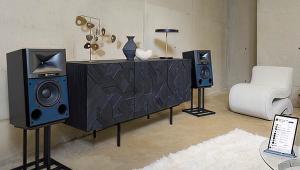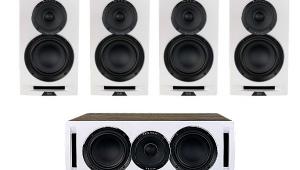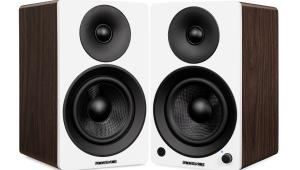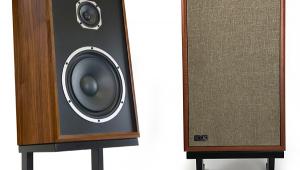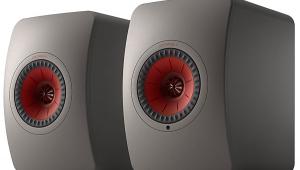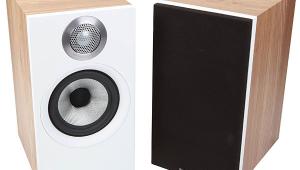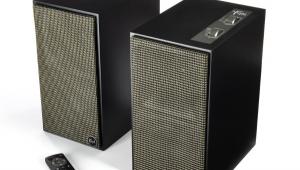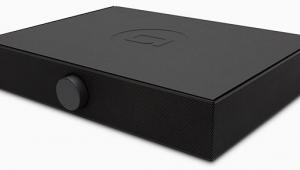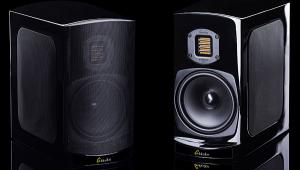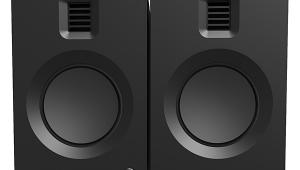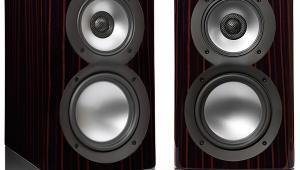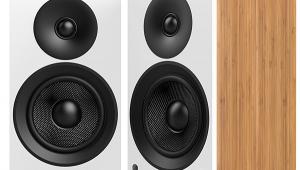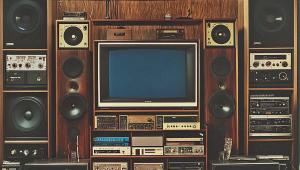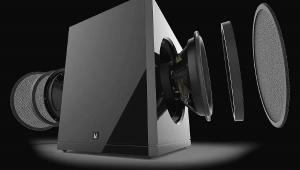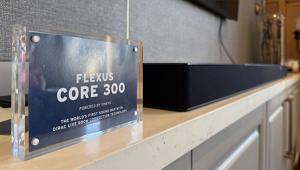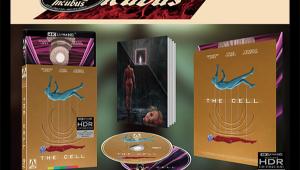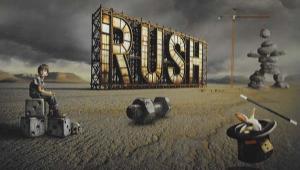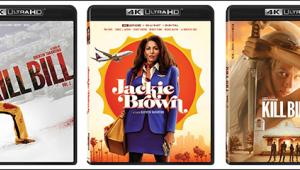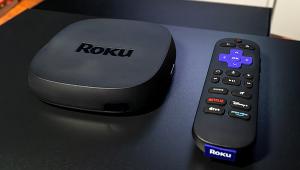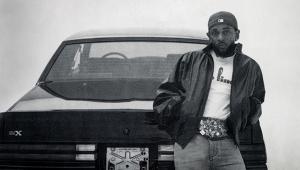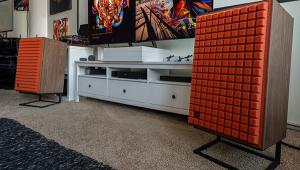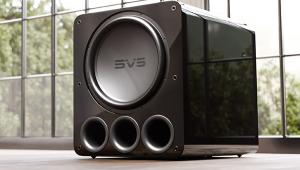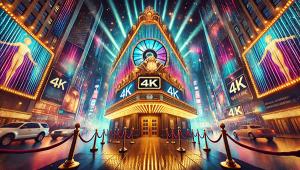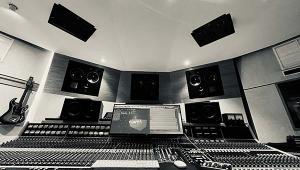JBL Control NOW AW Speaker System Page 2

I used a set of five identical Control NOWs on stands. Since the woofers were already angled, I avoided the toe-in I normally use. To accommodate the wire-clip speaker terminals, I used a Monster THX ribbon cable in lieu of my usual fat snakes. You probably won’t be surprised that I took advantage of the sub’s wireless capability—and it worked without a hitch. Other associated gear included a Rotel RSX-1065 A/V receiver, Pioneer BDP-HD1 Blu-ray player, and Integra DPS-10.5 universal player. All movie selections were Blu-ray Discs.
Sensitive to Sources
XXX: State of the Union hurls Ice Cube, Willem Dafoe, and Samuel L. Jackson through an improbable presidential assassination scenario. The Dolby TrueHD soundtrack immediately challenged the sub with explosions, and the sub met the challenge with magnificent dynamics. In fact, with the default volume settings I normally use at the start of a review, the sub’s output was so high I had to turn it down to survive the movie. Despite the lossless soundtrack, barrages of midrange effects were a little fatiguing.
This turned out to be a characteristic of the XXX soundtrack. When I switched to No Country for Old Men (in high-resolution PCM), there wasn’t a single effect that induced discomfort, although several induced shock. Loud moments were thrilling but not fatiguing. Of course, much of the soundtrack is nearly silent, which gave my ears a chance to rest.
The angled woofers and horn-loaded tweeters worked wonders. The rifle shots resounded naturally in outdoor space and generated a large and well-integrated soundfield. In a confined indoor space, the muffled blams of a silencer-equipped rifle got the sub to practically bounce me out of my seat. Tommy Lee Jones’ narration seemed very faintly nasal.
My knee-jerk reaction was to think that this was perhaps a property of the tweeter horn. However, this effect did not noticeably recur with any other vocals in any other test material. Dialogue clarity in all movies was above average.
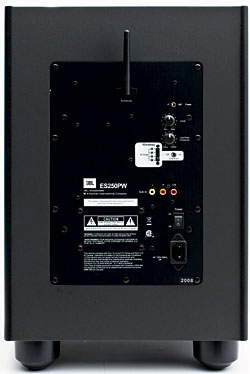 My second audition of Across the Universe was my first on Blu-ray with Dolby TrueHD. The visuals are high-def worthy and dazzling. But when placed under a merciless lossless spotlight, the soundtrack doesn’t serve this movie musical as well. Pitch-corrected vocals are too obviously synthetic, dynamics are squashed, and the midrange has that crunching, grainy, fatiguing quality I associate with excessive compression and equalization. The crunching varied from track to track. On the better ones—like the gospel-drenched version of “Let It Be”—it was less prominent. Imaginative movie and charming performances, but it deserves a better mix.
My second audition of Across the Universe was my first on Blu-ray with Dolby TrueHD. The visuals are high-def worthy and dazzling. But when placed under a merciless lossless spotlight, the soundtrack doesn’t serve this movie musical as well. Pitch-corrected vocals are too obviously synthetic, dynamics are squashed, and the midrange has that crunching, grainy, fatiguing quality I associate with excessive compression and equalization. The crunching varied from track to track. On the better ones—like the gospel-drenched version of “Let It Be”—it was less prominent. Imaginative movie and charming performances, but it deserves a better mix.
I came away from the movies with three key convictions: The JBLs are honest enough to reveal your source material’s strengths and weaknesses. Their dispersion pattern creates an awesomely full and uniform soundfield. And finally, the word is spelled doughnut. Only philistines use the spelling donut.
Stereo That Feels Like Surround
O’Reilly Street by James Galway and Tiempo Libre gave the Control NOWs a baroque-flavored Latin workout. Galway’s flute was focused and up front. I was also impressed by how the Cuban band (the album is named after a street in Havana) spread slightly outside and in front of the speakers. And that wasn’t the only surprise.
I flipped back and forth between Dolby Pro Logic II and stereo and eventually settled on stereo as the default setting. True, with five identically matched speakers, DPLII can work wonderfully. Since the speakers were identical, DPLII did work well. But the even coverage that the design achieved gave plain old two-channel the spaciousness and evenness that I associate with well-executed surround. It was slightly harder to localize the speakers with stereo than with surround. That’s the first time that’s ever happened to me.
Due to the horn tweeters, I would have expected the high frequencies to be beamy. Even in this range, though, the soundstage held together well, both on and off axis. The phantom center image was so strong, I had a hard time believing the center speaker was shut down. I theorized that the tweeter’s un-beamy character might have something to do (at least in part) with the fact that it fires straight into a tapered diffuser behind the JBL nameplate centered on the grille.
Steely Dan’s Aja (vinyl) features some of the most harmonically rich horn charts in popular music history. While more revealing high-end speakers would have tried to separate the individual instruments, the JBLs integrated them into an organic whole.
They spread them across the soundstage in the dazzling manner to which I’ve become accustomed. Even though I knew that would happen, it blew me away. Wireless or not, the sub gave Steve Gadd’s legendary drum solo in the title track the hard punch it deserves.
My only disappointment was the piano sound. It may have been recorded a tad bright, but it emerged a bit brighter and more clattery than usual. The speakers’ spatial character is so striking that you can listen to them a long time before you’ll notice that the upper bass is a little lean. The manufacturer rates them down to 80 hertz, so I initially set the sub crossover there, but I ended up raising the crossover to 100 Hz.
Bill Bruford’s Feels Good to Me (vinyl) benefitted from the higher crossover. It gave the bandleader’s drums more impact. This heady jazz/prog-rock gumbo was recorded spatially flat and light on reverb, so the JBLs concentrated on its density. I put down my notebook and got sucked into pure listening. I reveled in the all-star band that included Allan Holdsworth on guitar, Dave Stewart on keys, and Jeff Berlin on bass, all soloing their hearts out.
OK, Let’s Retire the Doughnut Jokes
The JBL Control NOW is an inspired response to marketing imperatives for a go-anywhere speaker. These speakers will fulfill their destiny in an awesome variety of multizone audio applications. While all speakers are placement dependent to some degree, these are less fussy than most. The only way to prevent them from dispersing sound over a wide area would be to put them in a closet and close the door.
In the process of giving the Control NOW a versatile and distinctive shape, Charles Sprinkle and his team provide a new solution to the uneven-dispersion characteristics of the woofer-tweeter-woofer speaker configuration. The resulting spatial prowess gives the Control NOWs an unexpected credibility in the home theater sphere. I was especially struck by the effectiveness of the full-soundfield effects. The system had an uncanny way of knitting the soundfield into a seamless whole without any speaker calling attention to itself.
The powerful wireless sub may prove to be another kind of problem solver. True, it only eliminates the line-level cable and not the power cable. But if your room has a power outlet near the sub, you can avoid running the interconnect cable. That will probably help a lot of people.
JBL is one of the few huge speaker brands that sells truckloads of stuff through mass-market retailers but maintains a fresh perspective that’s open to innovative solutions. As these products suggest, it’s a pretty underrated outfit.
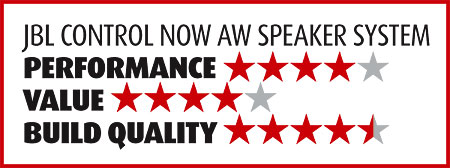
- Log in or register to post comments
